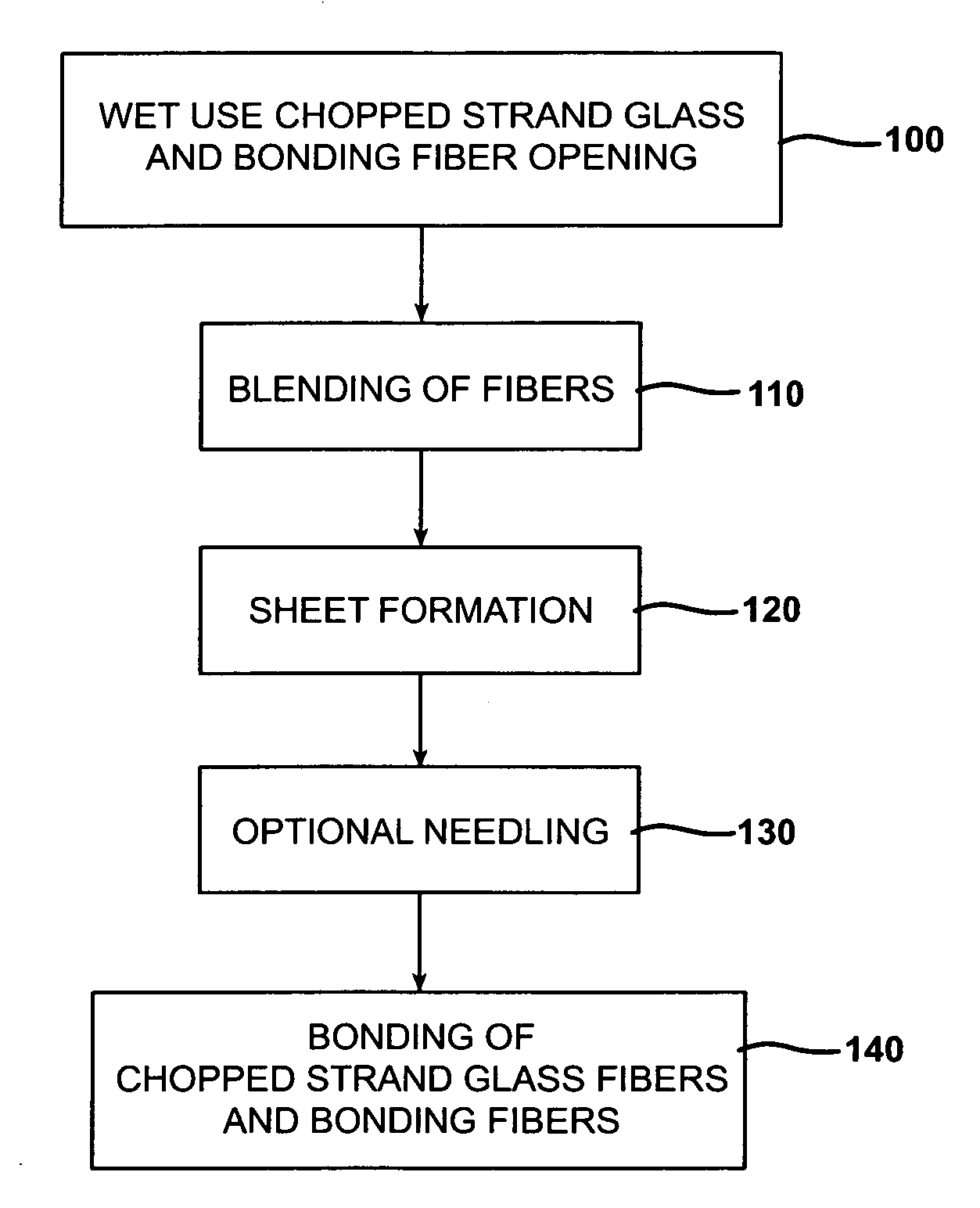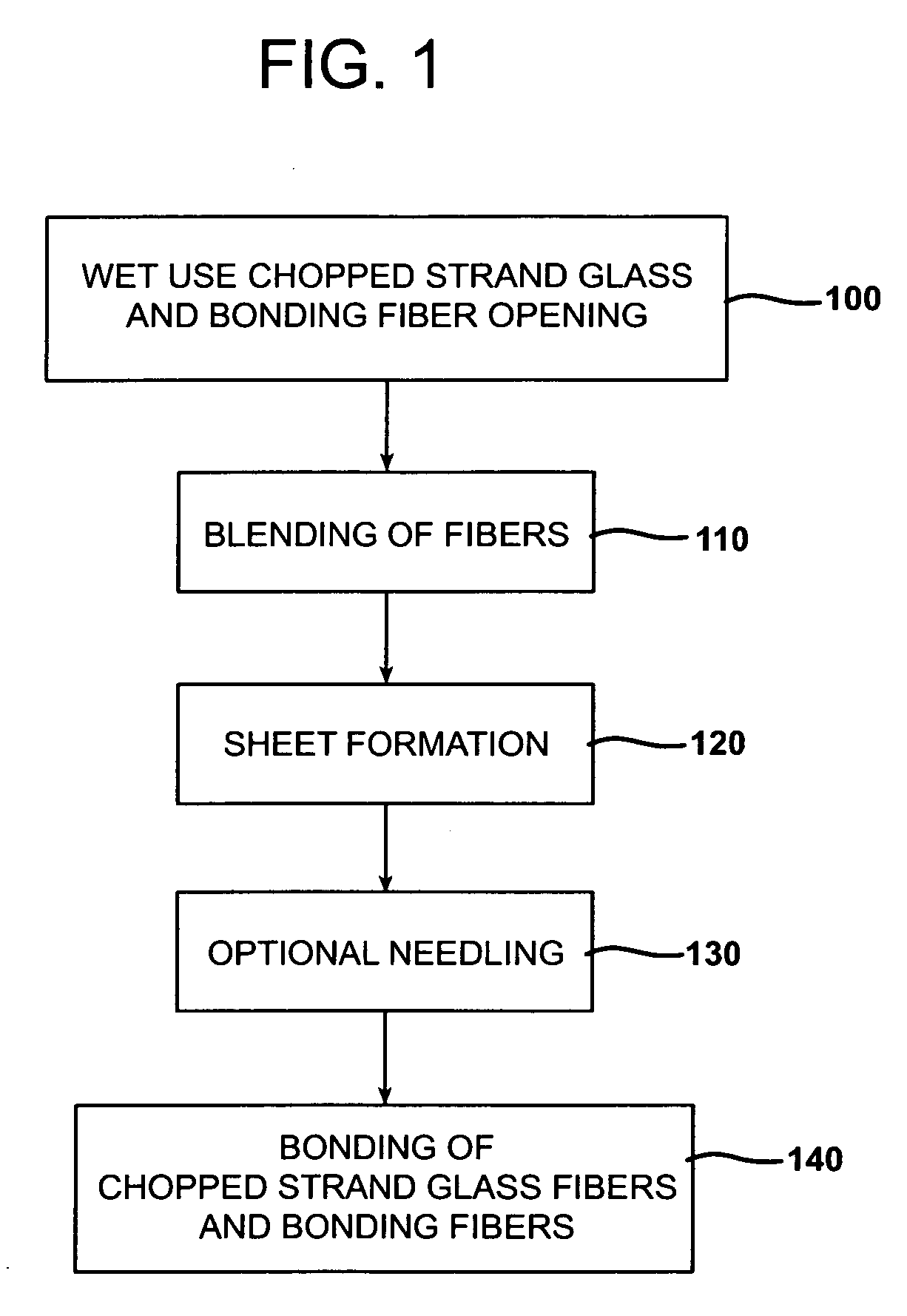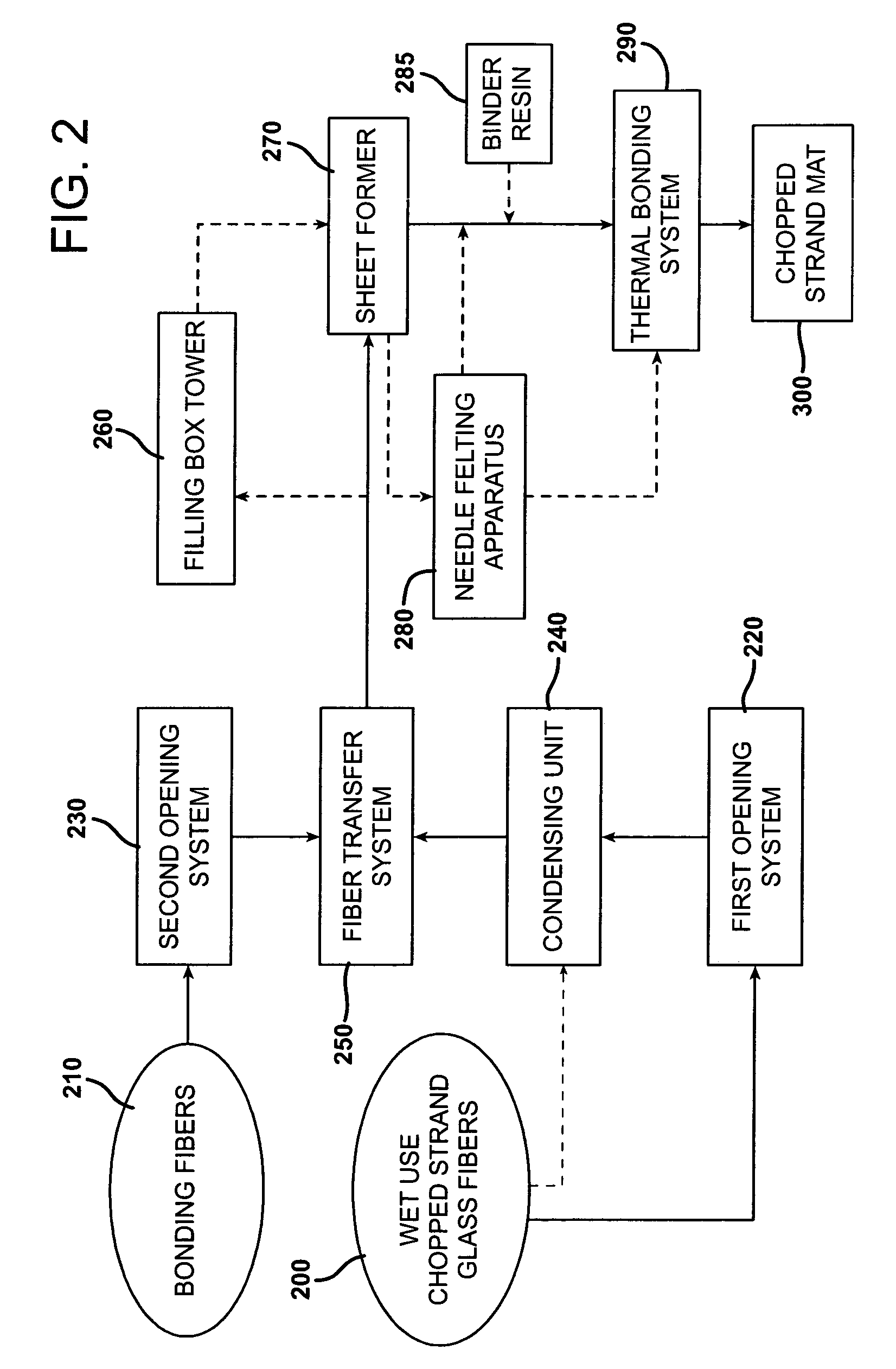Static free wet use chopped strands (WUCS) for use in a dry laid process
a wet-laying process and wet-laying technology, applied in the field of static free wet-laying wet-laying process, can solve the problems of more expensive processing of dry-chopped input fibers, mats that do not have a uniform weight distribution throughout their surface area, etc., to reduce the amount of free fibers or fibers in the air, improve the ability to control, and reduce the effect of potential irritation
- Summary
- Abstract
- Description
- Claims
- Application Information
AI Technical Summary
Benefits of technology
Problems solved by technology
Method used
Image
Examples
example
[0056] 70 g of a 40% solution of Katax 6660-A (antistatic agent) was added to 15 kg of Owens Corning's size designated 9501 and agitated to homogenize the sizing. The size was applied to glass fibers by application rollers prior to collecting the fibers into strands. The wet use fibers were then chopped and dried for 12 hours at 120° C. The dried glass was subjected to a simulation which replicated the glass friction as seen in a conventional dry-laid sheet molding line. The static generated on the glass fibers was measured using a Rothschild Static-Voltmeter R-4021. Static measurements were taken at 21° C. and 43% relative humidity. The static value of the wet use chopped strand glass fibers treated with the modified sizing containing an antistatic agent was measured at 35 Volts.
[0057] For comparison, wet use chopped strand glass fibers were coated with Owens Corning's 9501 size (no added antistatic agent(s)). The wet use glass fibers were chopped, dried, and the static value was ...
PUM
| Property | Measurement | Unit |
|---|---|---|
| Percent by mass | aaaaa | aaaaa |
| Percent by mass | aaaaa | aaaaa |
| Weight | aaaaa | aaaaa |
Abstract
Description
Claims
Application Information
 Login to View More
Login to View More - R&D
- Intellectual Property
- Life Sciences
- Materials
- Tech Scout
- Unparalleled Data Quality
- Higher Quality Content
- 60% Fewer Hallucinations
Browse by: Latest US Patents, China's latest patents, Technical Efficacy Thesaurus, Application Domain, Technology Topic, Popular Technical Reports.
© 2025 PatSnap. All rights reserved.Legal|Privacy policy|Modern Slavery Act Transparency Statement|Sitemap|About US| Contact US: help@patsnap.com



